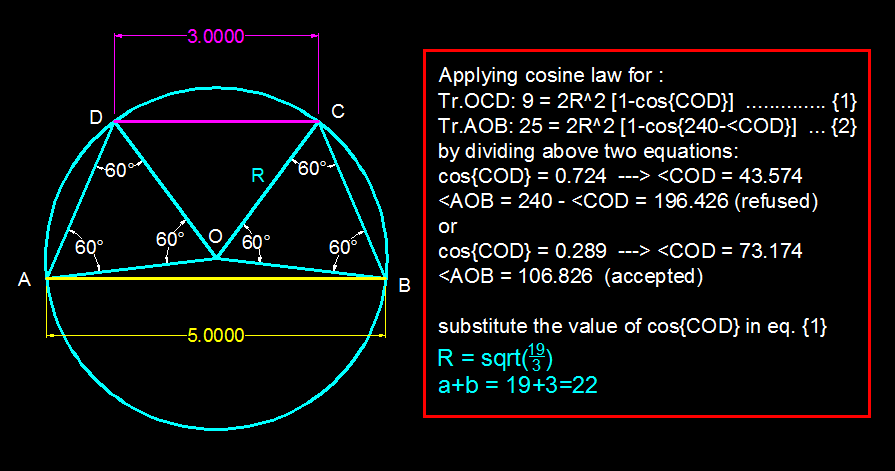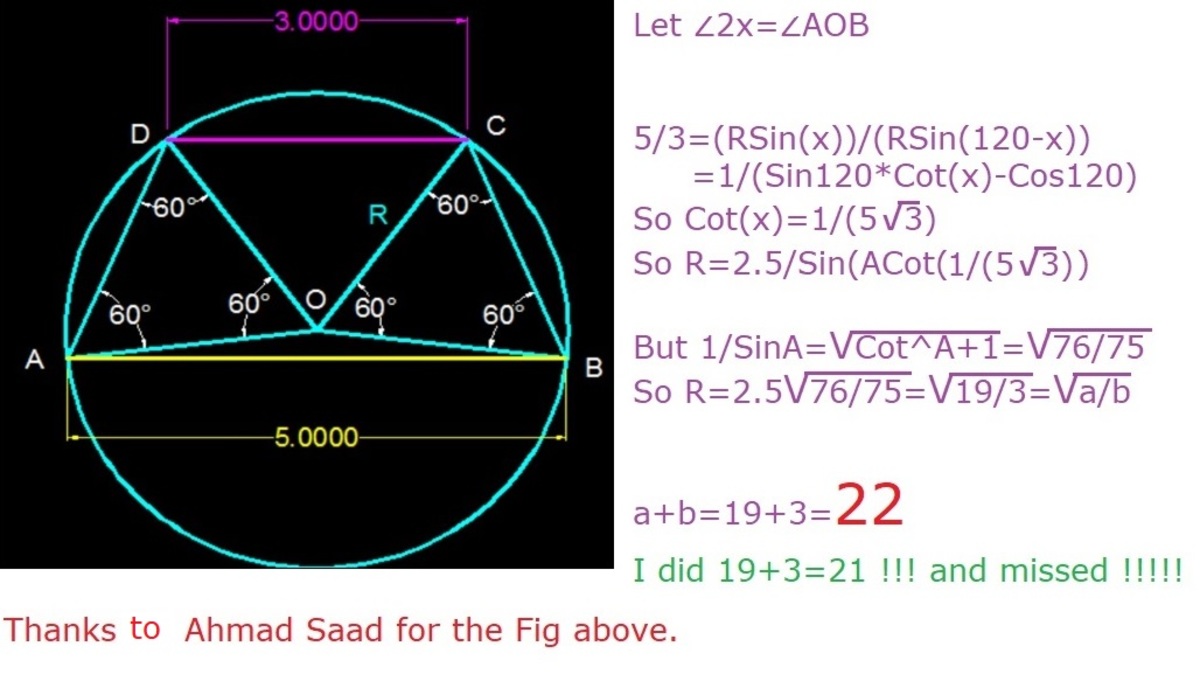A Cyclic Trapezoid
is a trapezoid with bases and . Furthermore, is inscribed in a circle with radius , such that the legs and satisfy . If , find .
The answer is 22.
This section requires Javascript.
You are seeing this because something didn't load right. We suggest you, (a) try
refreshing the page, (b) enabling javascript if it is disabled on your browser and,
finally, (c)
loading the
non-javascript version of this page
. We're sorry about the hassle.


Since A B C D is cyclic, we can calculate the area as A = ( S − A B ) ( S − B C ) ( S − C D ) ( S − A D ) , where S is the semi-perimeter. We can calculate S = 2 r + 3 + r + 5 = 4 + r , and substituting this into our area formula, we get A = ( r − 1 ) ( 4 ) ( r + 1 ) ( 4 ) = 4 r 2 − 1 .
Now let O be the center of the circle, and draw a diameter through O perpendicular to A B and C D . Let this diameter meet A B and C D at points M and N respectively. Because of symmetry, we also know that M and N are the midpoints of their respective sides. We can now use the basic formula for area of a trapezoid: A = 2 b 1 + b 2 h = 4 h . We also know (using right triangles): h = M N = M O + N O = O A 2 − A M 2 + O D 2 − D N 2 = r 2 − 4 2 5 + r 2 − 4 9 .
Equating our areas, we solve for r :
4 r 2 − 1 = 4 ( r 2 − 4 2 5 + r 2 − 4 9 )
r 2 − 1 = r 2 − 4 2 5 + 2 ( r 2 − 4 2 5 ) ( r 2 − 4 9 ) + r 2 − 4 9
1 5 − 2 r 2 = ( 4 r 2 − 2 5 ) ( 4 r 2 − 9 )
2 2 5 − 6 0 r 2 + 4 r 4 = 1 6 r 4 − 1 3 6 r 2 + 2 2 5
1 2 r 4 = 7 6 r 2
r 2 = 1 2 7 6 = 3 1 9
r = 3 1 9 .